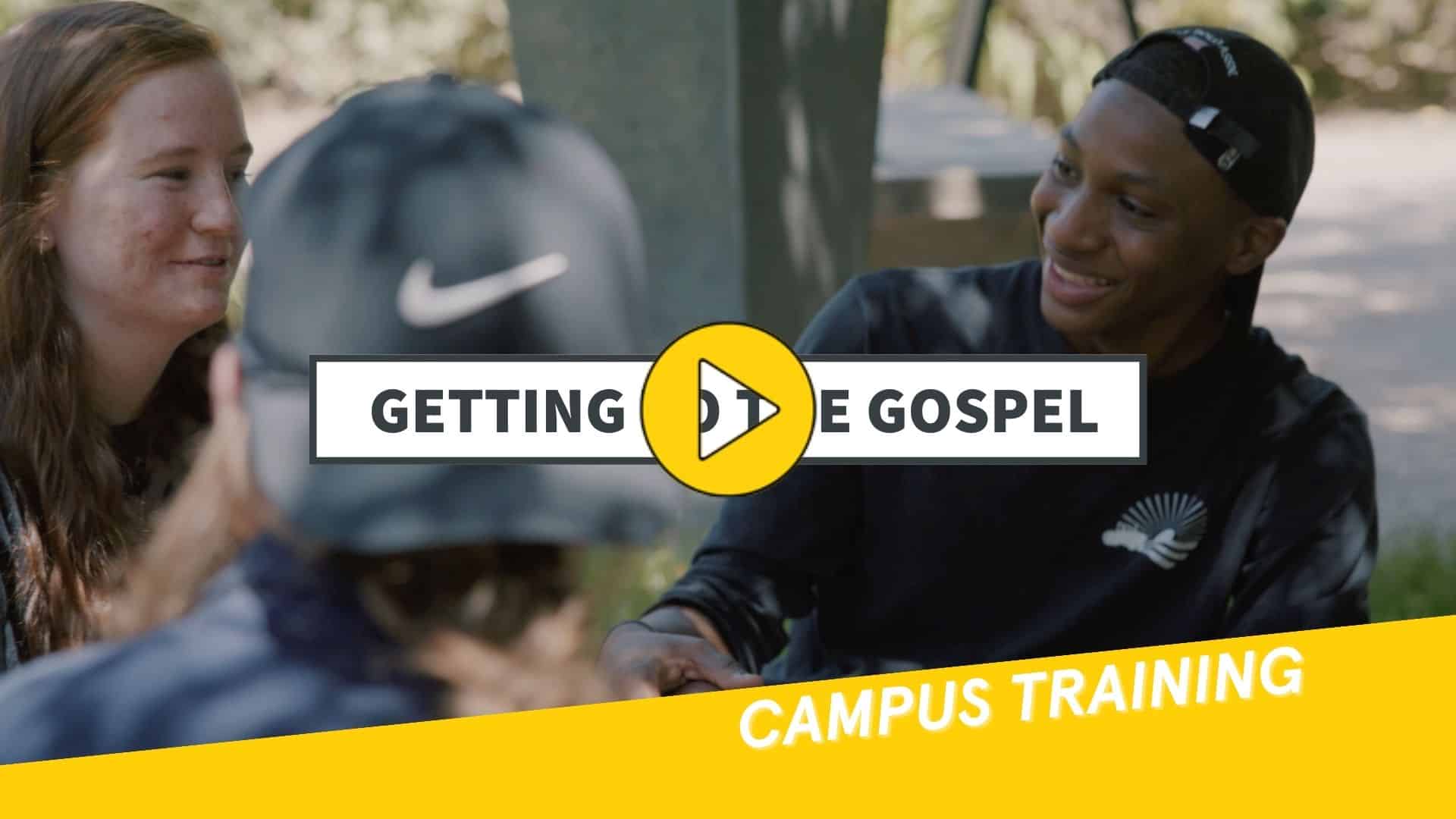I once listened to a friend give a very long, complicated explanation of Cru. The listener’s response was not what I expected to hear.
“That sounds like a pyramid scheme.”
What?! How could someone mistake our ministry for a business that makes its customers empty promises?
I felt surprised, but honestly, it should have been expected. A poor explanation will confuse people and lead to all kinds of misunderstandings. It is always worth the effort to learn how to share a great explanation for what you do with Cru.
The best explanations are concise, clear, and given with confidence. Learning to explain Cru well to parents, teachers, and students will build trust and clear up any misunderstandings.
It sounds so easy. So why does it feel so difficult sometimes?
Challenges to a Good Explanation
There are many obstacles that can make your ministry seem confusing. Preparing a great explanation can help you to overcome these challenges, but first you have to know what they are.
- Complexity – Cru has a big vision: that everyone, everywhere might have a chance to know and follow Jesus. That mission may be unfamiliar to some people. So complex explanations of how you try to accomplish that mission can create misunderstandings. We need to keep things simple and relevant.
- Distrust – Poor explanations can leave people with more questions than answers. This leaves people feeling suspicious. Providing clarity will build trust in relationships.
- Forgettability – You want people to actually remember what Cru is, right? Communicating a boring or vague vision of Cru will not leave an impact. We want to present a compelling case for what we do and why we do it.
When you explain the ministry you do in the community, you may not be able to overcome all of these challenges. The best presentation still does not guarantee a welcoming audience. Even Jesus understands what that is like.
Our goal is not a perfect presentation. We cannot change people’s hearts about anything. That is God’s job. However, a good explanation may help remove some barriers, so we want to be faithful to present our mission with Cru as best we can and trust God with the results.
Now that we understand the challenges, here are tips for crafting a better explanation of Cru.
One of the distinctive qualities of how a leader communicates is confidence.
1
Be concise
There are two kinds of information we can share: the “need to know” and the “nice to know.” To keep things concise, we want to focus on our audience’s greatest needs. However, to know what our listener needs, we first must recognize to whom we are talking.
Adults: When we are talking to parents and teachers, we want to highlight the ways we care for young people and help them. Maybe your Cru team helps with mentoring or tutoring. Or maybe you offer interested students a place to learn more about faith in God. These are the things that would interest parents and teachers.
Students: If we were talking to a high school student, we might highlight how Cru is a great place to meet some new friends, eat snacks together, serve the community, or learn more about personal faith in God. These are the things that they would need to know.
The details are often where many explanations struggle. It might be nice to know when Cru was founded, or how many staff there are across the country, or what Cru is doing around the world. However, we need to resist getting lost in those details and focus on what our listeners need to know.
Here’s an example. A school district near me has been outspoken about offering more resources to help students dealing with mental health issues. A Cru leader who serves that district is passionate about helping meet the mental health needs of young people. They believe God also cares deeply about this.
Because this Cru staff person listened to the needs of the school, they now explain Cru to the adults in that school district in terms of meeting that need. They didn’t actually change what Cru does, but they changed how they communicate it. They share what they are passionate about and the “need to know” details about how Cru meets the need.
What do the adult leaders and the students want most for the community on your campus?
Once you find out the answer to this question, you will be able to share concisely what the highest needs are on campus and how Cru can help. This may take some work to understand the campus, but it will be worth it.
2
Make it clear
Verbal fillers can make a great explanation just average. This could be one of the hardest things for many of us to overcome.
A Cru leader in Denver likes to use this short explanation:
“I’m part of Cru. We are a faith-based organization committed to helping students better understand life, relationships, and purpose.”
This is a great 10-second explanation. On the spot, some of us might unintentionally add several verbal fillers, and then it sounds like this:
“I’m part of, uh, Cru, we are like… you know… we’re like a faith-based organization, and, uh, we are like totally committed to helping students. You know, we just want them to like better understand life… and, uh, relationships… and like discover their purpose… and yeah, that’s what we do.”
It does not sound as clear. One simple way to avoid this is by memorizing a short explanation. By doing this, you won’t need to summarize on the spot and you will be able to eliminate verbal fillers that creep into your sentences while you search for what to say.
Use Problem and Solution
Another tip to make our explanation clear is to organize the key details of our ministry around a problem and a solution. We reference a problem and then share the key ways that Cru helps to solve that problem.
In our earlier example, the Cru leader serving the school district with a need for mental health resources might say something like this:
“I’m a part of Cru. We know students at this school are under a lot of pressure and struggle to succeed in the classroom. Cru is a faith-based organization whose staff, volunteers, and student leaders come alongside students to support them, both in the classroom and in life. We provide safe spaces in our clubs and small group Bible studies where students feel like they belong and can thrive.”
This explanation gives clarity with some key details. The listener now knows that this Cru ministry…
- is faith-based
- has staff, volunteers, and student leaders
- has clubs and small group meetings
- uses these resources to support the students that are coping with pressure and/or struggling in the classroom (Cru’s solution to the problem)
They now have a pretty good idea of what Cru is and does. Clarity doesn’t mean that we share all the details all at once. We share the key details about the problems we want to address and our solution to those problems. Our listener can then follow up with any questions about those key details of which they are most curious.
Great explanations are concise, clear, and given with confidence.
leaders talk differently. One of the distinctive qualities of how a leader communicates is confidence. Your confidence will be expressed with a concise and clear explanation combined with these three things.
Make eye contact.
Not a staring contest kind of eye contact, but the kind that expresses the conversation you’re in matters to you. Ignore your phone or other distractions and focus on the person you’re talking to.
Be prepared.
Having your explanation ready to go will mean you start the conversation with high confidence. If you just wing it, it might go well and your confidence will grow as you go, but there is no way to know at the beginning of the conversation. Being prepared means you start off with confidence. You can always adapt later if you need to.
Smile!
This is a very important and often overlooked tip. Even when you’re on the phone make it a point to smile when you talk if you want to sound more confident. When you meet an adult and start to explain Cru make sure you’re smiling. It’s not just visual. You actually sound different when you smile.
Practice will grow your confidence. Try practicing these explanations below. You may feel like taking the explanation below and “personalizing” it a bit. Resist the urge to get creative and trust the growth process. That means start with the explanation in this article and after you have used it about a dozen times, then feel free to make a few edits based on things you have learned.
This was normal, even for the first disciples who were following Jesus. In the Gospel of Luke we see a historical account of Jesus sending the disciples ahead of Him to the towns He would visit. We see that Jesus told them exactly what to say in Luke 10:5,
“When you enter a house, first say, ‘Peace to this house.’”
At the start, Jesus gave His followers some clear and concise phrases to use, and we will follow a similar approach.
Here are two short explanations for Cru that you can communicate to an adult.
OPTION 1
Hello, my name is _______.
I’m part of Cru; we are a faith-based organization committed to helping students better understand life, relationships, and purpose.
Secure, healthy friendships are vital to teenagers’ overall health and emotional well-being, but these don’t always happen naturally.
So we work to create safe spaces where teenagers can be themselves and build a network of diverse friendships through our fun on-campus and off-campus activities. We offer clubs, Bible studies, volunteering, mentoring, and conferences.” (Choose only the activities that apply to your campus).
OPTION 2
Hello, my name is _______.
I’m part of Cru; we are a faith-based organization committed to helping students better understand life, relationships, and purpose.
We work in connection with parents, teachers, and coaches to help students thrive in the classroom and in life.
Our staff and volunteers meet regularly with students, individually or in groups, to talk about life, making good choices, and their personal spiritual journey.
Try these simple statements to keep your explanation concise, clear, and confident.
Continue to practice sharing what you do with Cru. As you improve, you will build new relationships and see a growing sense of trust in yourself and in the work you do with students.








